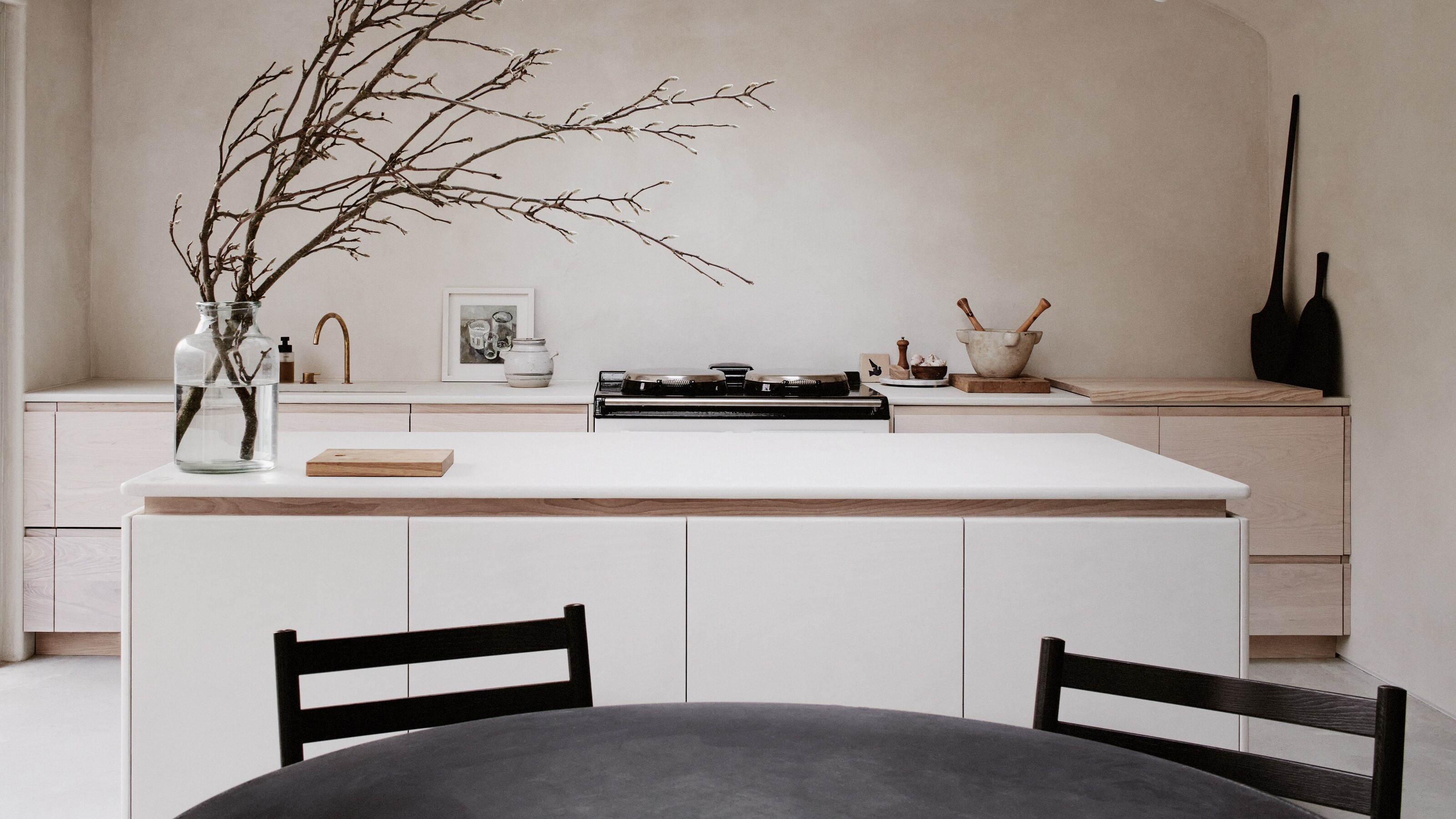
We live in a world where there are a million different ways to declutter or organize our possessions. So many places to begin your journey of living with less, yet there are fewer sources containing information to help guide you to the method(s) that align with your core values.
Decluttering and organizing aren’t just about the end-goal of decreasing visual clutter and freeing up physical space in your home, after all. They are just as much about the inner work – taking the time to reflect and decide what it is you want out of your life and, in turn, what you want/need from the stuff you decide to bring into it.
We spoke to professional organizers, minimalists and essentialists to outline two often confused principles that are popular ideas for how to declutter your home – ‘minimalism’ and the lesser known ‘essentialism’. Our discussions will help introduce you to the two practices in a bit more depth, explaining their stereotypes, differences, and belief systems when it comes to cutting down on material goods. Which one do you think you are – a minimalist or an essentialist? Or are you perhaps a mixture of both? Read on to learn more!
Why are practices such as minimalism and essentialism helpful?
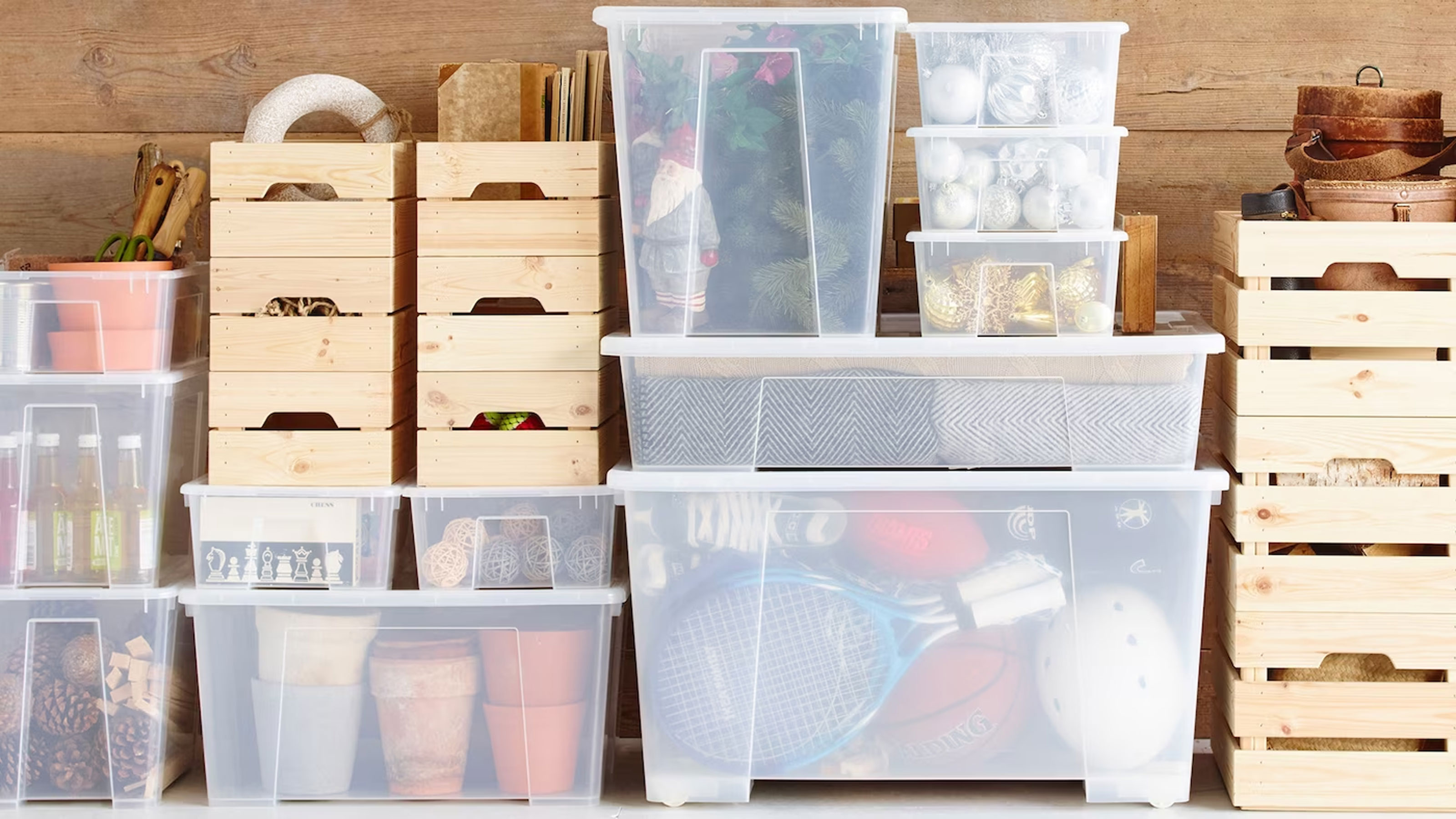
Life can be stressful, and no one wants to be further stressed out by a cluttered home. It can make you feel suffocated, in a constant state of searching for what you need, and weighed down by the gravity of the sheer amount in your possession. Not to mention, it can collaboratively take an incredible toll on your mental health.
Delving into philosophies of minimalism, non-attachment theory and essentialism can help to counterbalance this, creating a new goal, solution or sense of purpose for a person seeking clarity. Many homeowners see learning about these practices and implementing them into their lives as the answer to stopping the whirling feelings of their life being taken over by the external, and as a way to begin looking inward.
"It’s helpful to be mindful of how we use our space and time so that by the end of our lives we are satisfied that we did our best to be the best version of ourselves," says Kim Corey, Certified Professional Organizer®️ and Founder of Finely Sorted Organizing. For, after all, we don’t exist to be ruled by the stuff around us.
What is minimalism?
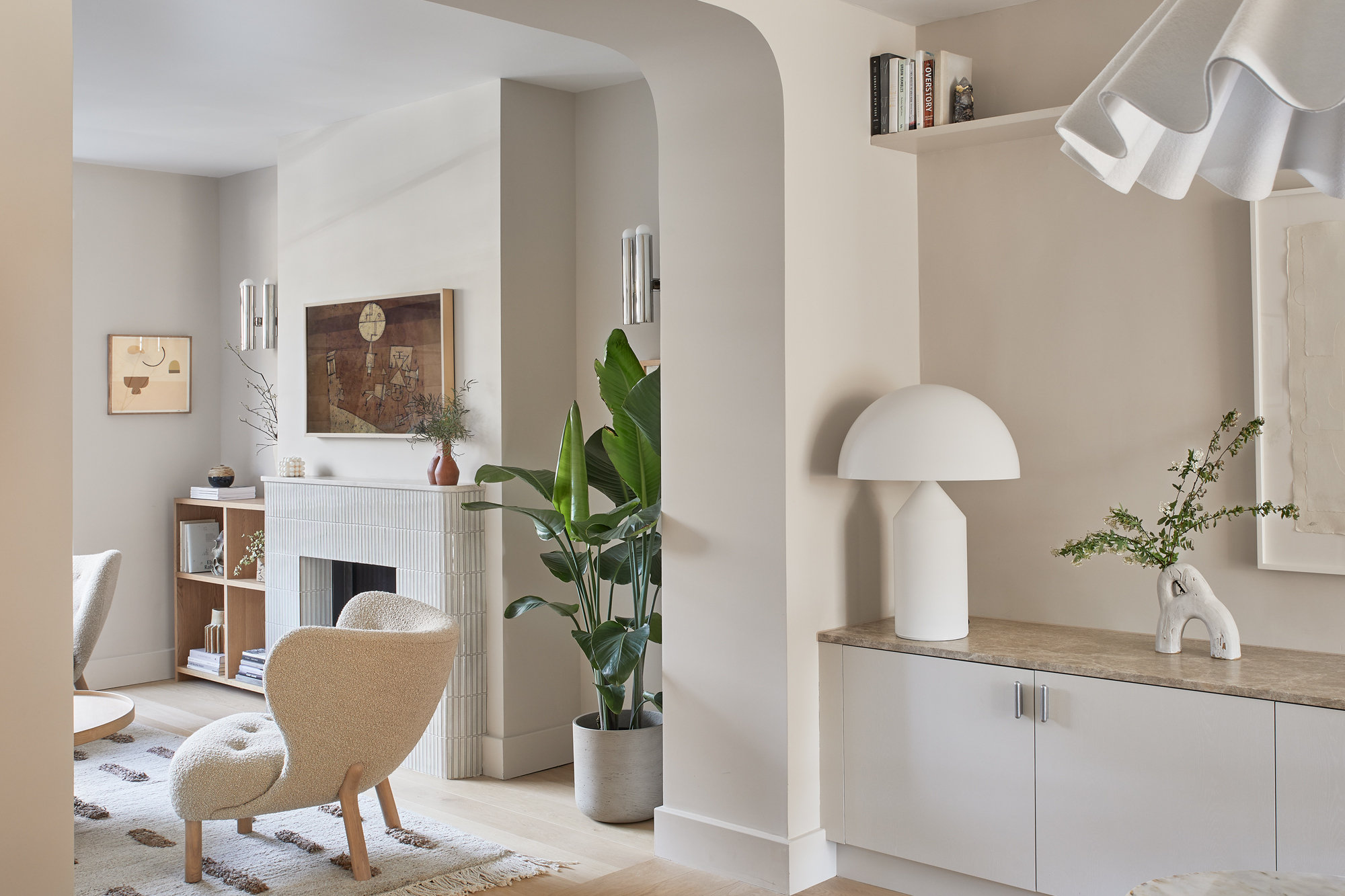
Minimalism is more than just the white walls and monochrome aesthetic that many misconceive it to be in the world of interior design. Although owning very little and embracing the simplicity of neutrals can align with some aspects of the practice, at core it’s less about removing everything from your life and more about focusing on what brings value and using minimalism in interior design.
"Minimalism represents living a simpler life, having fewer possessions and focusing on what truly brings value," says Barbara E. Tanaka, Strategic Home Design and Organizing Advisor at Real Estate Bees. "People commonly misconceive practices such as minimalism, believing minimalists must live in a bare lifeless space, and that they must give up everything – including their sentimentals! Whereas, it’s instead just about being intentional with your space and discarding clutter."
In the words of Marie Kondo, creator of the KonMari Method, ‘clutter’ refers to items that don’t “spark joy” or items that you don’t use, need or love. A fork, for instance, likely doesn’t spark joy within you, yet you can’t deny that it’s useful and something you frequently take out of its drawer.
Kim adds: ‘Having less visual noise in a home environment that is supposed to be relaxing can help the home to perform all required and desired functions,’ meaning that for some following minimalist principles can also increase their life’s sense of efficiency.
Shop Marie Kondo at The Container Store
What is essentialism?
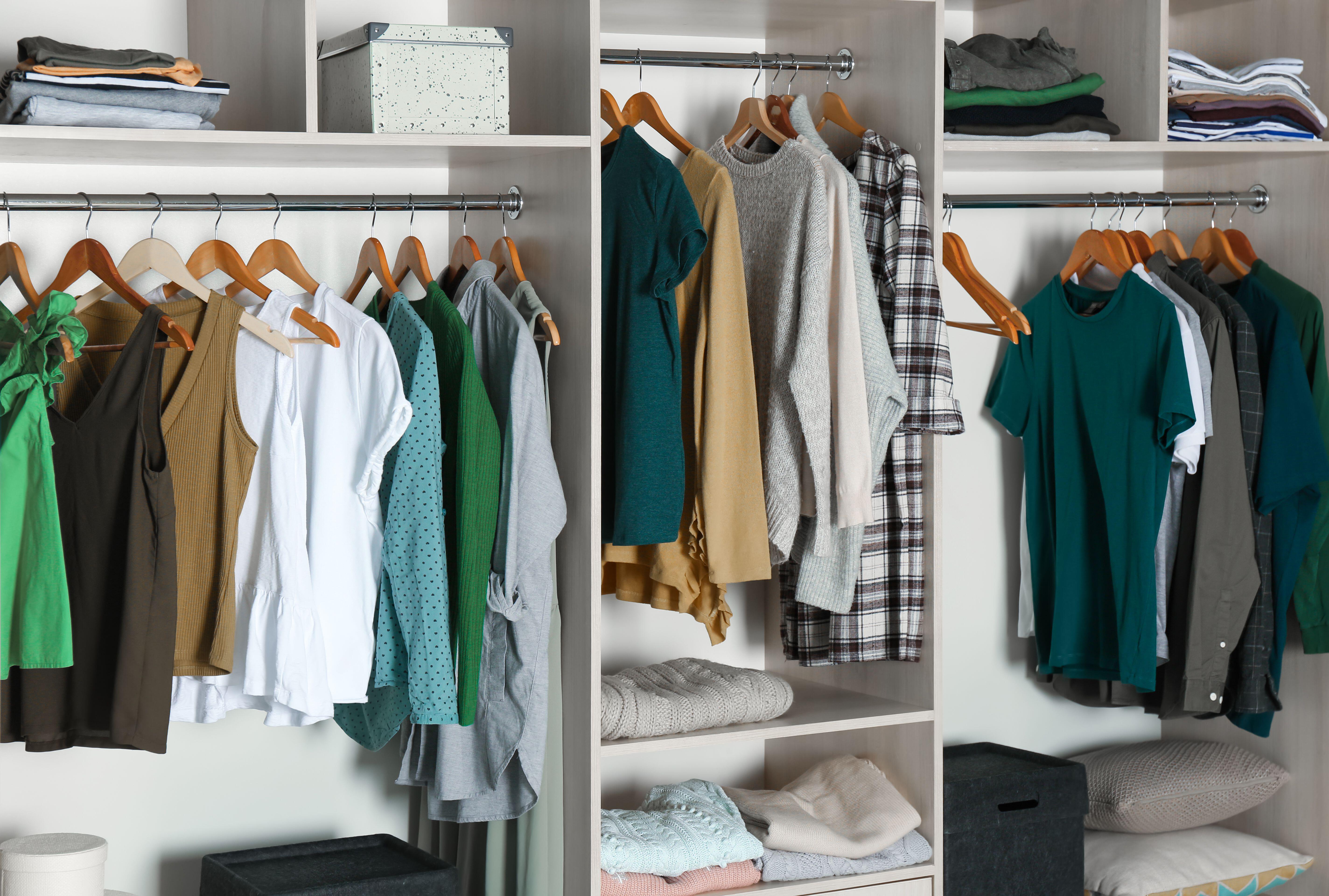
Essentialism and minimalism share a number of parallels but one key difference between the two practices is the focus on quantity. In minimalism, people typically aim to streamline their lives and own as little as possible, whereas in essentialism it’s about inviting and keeping in your life what serves you. As Professional Organizer, Andrew Mellen, goes on to discuss, a person doesn’t need seventeen shirts, but they shouldn’t have to discard any of them just to say they have less if they like each shirt they own.
"I’m not a minimalist, I’m an essentialist," says Andrew. "I find minimalism to be a bit dogmatic and still focused on stuff rather than how I want to live my life. It comes loaded with expectations and rules whereas as an essentialist I have the things that serve me, whether that’s seventeen shirts or four. If there is room in the closet for seventeen shirts, then I really shouldn’t have to be keeping score or getting rid of something for the sake of only having a certain number of items in my closet."
Following this essentialist principle is a good method to make sure you don't have regrets after decluttering.
In essentialism the idea of only keeping in one's life what serves them extends beyond the material: "Essentialism involves evaluating and eliminating non-essential activities and commitments, too," says Barbara. "This leads essentialists to become more productive and balanced, ensuring what’s most important in their lives gets done. A minimalist’s focus is more on achieving a clean, clutter-free space."
Which practice is better – minimalism or essentialism?
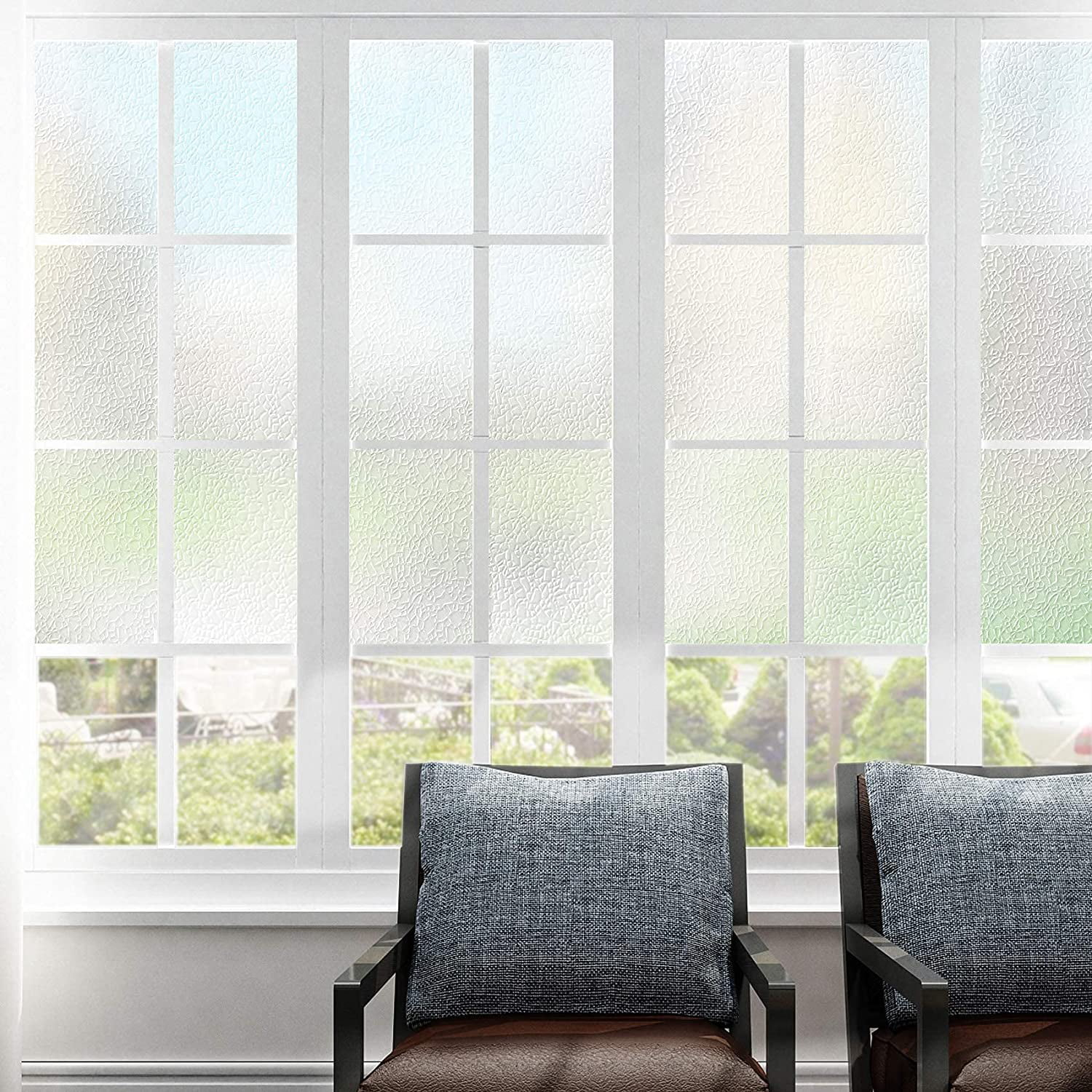
Neither minimalism or essentialism are objectively “better” than one another, nor is there any strict way a person has to go about following either practice. The journey to decluttering and organizing a home is something subjective and will look different to everyone, regardless of what they believe in or how they approach it.
Learning about as many perspectives and ideas as you can to ensure adequate inner work has been done before tackling your external space is what’s best – and honestly, these two practices in combination make a killer combo in helping you to avoid decision fatigue when decluttering!
"Minimalism and essentialism both deal with deliberate choices that work towards betterment in the quality of a person’s life," says Barbara. "They help one to remain focused on what genuinely matters, be it things or how to utilize one’s time. The combination of the elements derived from both practices can lead to a balanced, organized, meaningful, well-rounded life. Personalize their principles to your needs and values by developing a take that brings out joy and fulfillment."
Andrew importantly adds: "No rule or suggestion is more important than how you feel as you’re doing this work and engaged in this process. Whatever serves you as you examine the thing around you, how they either support you or block you from doing what you want to do, always remember that the stuff is here in service to your life. The stuff isn’t your life, and the things themselves shouldn’t be more important than your life."
Let go of items when you are ready, if you feel ready. If your situation is extreme, take time to examine what got you to this point, potentially seek help and find your “why’s”. If seventeen shirts truly bring a smile to your face, who's here to tell you that isn’t right? Enjoy your stuff, treasure your space and do your best to strike a balance of keeping what you love, without loving absolutely everything.
You have a great purpose in this world, and it isn’t to spend forever digging through piles of possessions that don’t serve you. They could bring joy to the life of someone else.
Price: $8.68
Type: Hardcover
Amazon's Number 1 Best Seller in Feng Shui







